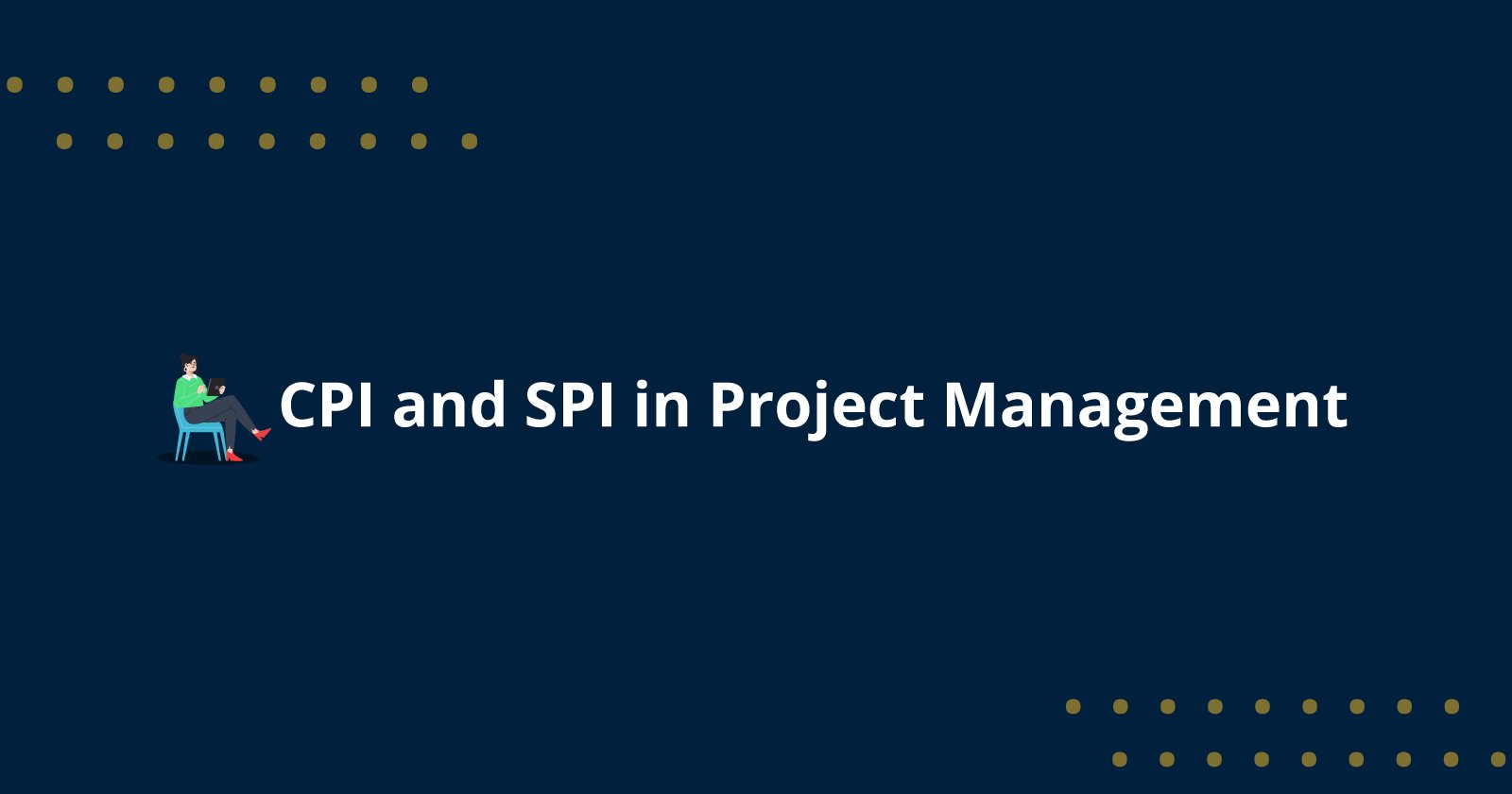Understanding the extent of project advancement remains crucial to project management because it helps organizations achieve deadlines and budget targets and meet quality goals. The two essential metrics for project performance measurement include the Cost performance index (CPI) and the Schedule performance index (SPI).
The Earned Value Management (EVM) framework includes two main indices as part of its project management technique for gathering performance insights about scope budget and schedule delivery.
This blog explains CPI and SPI along with their functioning principles and shows their implementation potential for project managers to achieve success.
Cost Performance Index (CPI).
An organization can see project budget efficiency through the Cost Performance Index (CPI). The cost efficiency calculation relies on a comparison between earned value and actual work costs.
The formula for CPI is:
CPI= Earned Value (EV)
------------------------
Actual Cost (AC)
Where
EV: The work already done forms the base of EV measurement.
AC: The actual cost measurement describes the financial costs paid for completed work tasks.
The Project achieves the right budget performance when the CPI reaches exactly 1.0. When the CPI levels surpass 1.0, the budget status shifts to under budget status, yet a budget status change to excessive budget occurs if the CPI drops below 1.0.
Schedule Performance Index (SPI)
Project time utilization performance is evaluated through the Schedule Performance Index (SPI). The relationship between Earned Value and Planned Value at this stage of work generates the Schedule Performance Index measurement.
The formula for SPI is:
SPI= Earned Value (EV)
--------------------------
Planned Value (PV)
Where:
EV: The current work value that achieves project milestones is designated as EV.
PV: The planned value depicts the expected work expenses that projects should have executed at present.
The measurement of SPI reveals the project as scheduled at 1.0. Any SPI value above 1.0 indicates the project's progress is faster than planned, and readings less than 1.0 signal project delay.
Learn about our Phases of Project Management.
Why CPI and SPI Matter in Project Management?
The project progress evaluation for both budget and schedule alignment occurs through SPI and CPI during monitoring operations. Software project managers must perform routine metric tracking to identify problems that will require immediate corrective actions.
Usually, businesses conduct CPI analysis to verify financial limits compliance besides measuring product resource efficiency.
By using SPI, project managers detect whether current deadlines will be met, which also helps determine if extra resources should be acquired for marketplace sustainability.
Project managers should understand the process of implementing CPI and SPI for monitoring purposes.
Do you also want to be a Project Management Professional?
How to Use CPI and SPI for Project Monitoring
Project managers should apply the following steps to achieve maximum results from CPI and SPI.
- Periodic checks should include both CPI and SPI measurements to keep the project moving forward. Early detection of deviations is possible because of regular monitoring, which allows enough time for required adjustments.
- Project managers should examine longer-term patterns to detect meaningful patterns. Cost inefficiencies will likely increase when CPI decreases, and so will the likelihood of project delays whenever SPI stays consistently low.
- Project managers need to implement corrective actions because deviations observed from planned targets in CPI or SPI data need adjustments to resource distribution with modifications of timeline schedules and cost-saving measures.
Conclusion
Successful project tracking mostly depends on CPI and SPI, which project managers use as fundamental management tools. Project managers use their understanding of performance metrics to make intelligent decisions that help them correct problems to achieve budget and deadline requirements. Index monitoring activities drive better project performance while simultaneously increasing stakeholder satisfaction. Organizations achieve better project success while maintaining limited risks through this practice.
Also, read about Project Management Techniques














 +1-361-998-9988
+1-361-998-9988


